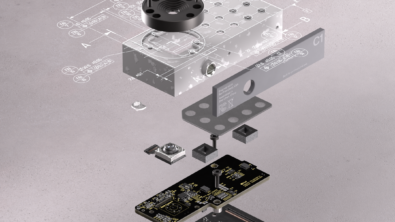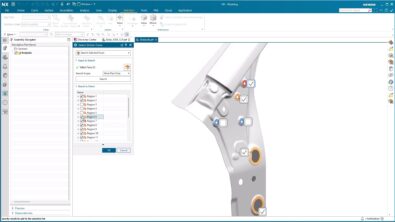Vehicle Design Automation | NX Tips and Tricks

The June 2023 release of NX™ software is packed with enhancements to help increase your design productivity. For our latest installment of Tips & Tricks, we’ll be jumping into some helpful new functionalities for Vehicle Design Automation (VDA). In this post, we’ll be reviewing features within VDA to validate automotive designs and ensure regulatory compliance.
Let’s jump right in!
Save time by using the Base Data command for vehicle configuration setup

Vehicle Design Automation enables users to validate automotive design for safety, occupant ergonomics, as well as compliance to visibility standards. This is a helpful tool for making sure your designs are compliant with the industry and regulatory standards of your region.
A helpful tip for saving time in the early stages of the design cycle is to use the Base Data command to configure key vehicle dimensions and parameters. This will enable you to easily edit and adjust features such as:
- Vehicle length and width dimensions
- Seating Reference Point (Hip Point)
- Steering wheel and pedal placement
- Wheel size and positioning
- Seat direction and angle
The VDA application of NX includes more 60 standards from over 15 regulatory bodies from around the world. Simply select the specific standard(s) for which you are designing, and NX will automatically assess the vehicle layout. Based on this analysis, the output geometry will continually update throughout the development cycle—saving you time by reducing the need for manual review.
Top Tip: Use the Import and Export Expressions command to import user-defined expressions from a spreadsheet into Base Data.
Create a 2D manikin with an Eyellipse and use Windshield Vision Zones to test wiper patterns

Another useful VDA feature for helping to test and validate designs is the 2D Manikin command. This enables you to create a two-dimensional manikin from a side view perspective. You can create multiple manikins—from a driver to onboard passengers—in order to test for posture, position and reach.
The Eyellipse feature creates a geometry for a number of standards defining the position of the occupants eyes and line of sight. After creating an Eyellipse, you can use the Windshield Vision Zones command to evaluate defined vision zones, based on specified standards and vehicle classification. An example of this would be to test whether a vehicle’s windshield wipers cover enough of the windscreen to provide the driver with adequate visibility when in use.
Once again, Vehicle Design Automation includes multiple class-types for international vehicle design standards. Whether you’re evaluating regulatory compliance for a family vehicle or a commercial bus, NX will automatically test and validate your designs for your selected category.
Conclusion
Thanks for checking out our latest tips & tricks review for Vehicle Design Automation! Our June 2023 release of NX is full of time-saving features created to drive efficiency and reduce design cycle timelines. Be sure to check back next week for more tips as you continue your journey with NX. In the meantime, you can learn more about Vehicle Design Automation by watching the video below!


